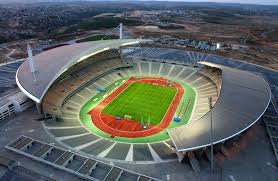
Norway Tippeligaen
Norway Tippeligaen, also known simply as the Eliteserien, is the top professional football division in Norway. Known for its competitive nature and passionate fanbase, the league has made significant contributions to both Norwegian football culture and the development of players who often go on to make their mark in international competitions. Over the years, the Tippeligaen has become a key platform for showcasing talent and presenting thrilling matches that captivate audiences both in Norway and beyond 88CLB
History of the Norway Tippeligaen
The history of Norway Tippeligaen is rich and varied, full of moments that have defined not just the league itself, but also the very essence of Norwegian football.
The league was founded in 1937, originally under the name “Hovedserien,” and it has undergone various transformations to reach its current format.
Origins and Founding of the League
When the league commenced in 1937, it was introduced as a way to organize football competition in Norway systematically. The motivation behind this formation was strong: creating an environment where local clubs could compete on a national level would foster more significant interest in football among fans.
Initially, the league was relatively small, with only a handful of teams participating. However, as the popularity of the sport grew, so did the number of clubs involved. By 1963, the league was renamed to what we know today as the Tippeligaen, reflecting not only its growth but also its increasing prominence within Norwegian sports.
Evolution through the Years
As times changed, so did the structure of the Tippeligaen. The league saw its first major shift in 1963 when it transitioned from a regional league to a national one. This change allowed for a more comprehensive representation of Norwegian football, as clubs from all over the country began to participate.
Throughout the decades, the Tippeligaen experienced fluctuations in terms of competitiveness. Certain clubs emerged as dominant forces, such as Rosenborg BK, which enjoyed a prolonged period of success during the 1990s and early 2000s. Their ability to consistently win titles helped to raise the profile of the league internationally.
The Modern Era
In recent years, the Norway Tippeligaen has taken significant steps to enhance the quality of football and attract larger audiences. The incorporation of technology, improved marketing strategies, and partnerships with international broadcasting networks has played a pivotal role in transforming how the league is perceived worldwide.
The introduction of new clubs and the emergence of rivalries have also contributed to the dynamic nature of the league. Matches are often characterized by intense competition, tactical battles, and passionate support from fans, making every game a spectacle.
Structure and Format of the League
Understanding the structure and format of the Norway Tippeligaen is essential for grasping how the competition operates and what makes it unique. It features several layers that contribute to its complexity and excitement.
The league operates on a promotion and relegation system, which adds an extra layer of stakes to every match.
League Composition
At present, the Tippeligaen comprises multiple teams, typically representing different regions of Norway. Each season sees these teams competing against one another in a series of matches, culminating in determining the overall champion.
The league’s composition can include traditional powerhouses alongside newly promoted teams. This mix creates a fascinating dynamic where established clubs must fend off challenges from rising teams, ensuring that no match is ever a guaranteed victory.
Match Schedule and Point System
The Tippeligaen usually follows a familiar round-robin format. Each team plays every other team twice, once at home and once away. Points are awarded based on match outcomes, with victories yielding three points and draws awarding one point to each side.
This system fosters strategic gameplay, as teams vie not only for wins but also to avoid defeat. Teams at the bottom of the standings face the threat of relegation to lower divisions, Norway Tippeligaen adding tension to the final weeks of the season.





